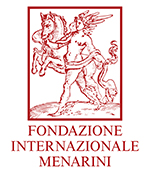
Press Release
In Milan the latest newsregarding major blood diseases.
Studies underway in gene therapy for treating thalassaemia
Milan, 24 September 2015 – In the future gene therapy could be the answer for people suffering from thalassaemia. This will be one of the main topics at the conference, RED CELL BIOLOGY THIRTY YEARS AFTER, organised by the Department of Clinical and Community Science of the University of Milan, the IRCCS Foundation, Ca’ Granda Ospedale Maggiore Policlinico of Milan and promoted by the Fondazione Internazionale Menarini. The conference, scheduled from 24 to 26 September in Milan, will trace the acquisitions on blood disease and molecular biology of red blood cells over recent years that have been the driving force for gaining knowledge on numerous other hereditary diseases as well. There has been a veritable explosion of scientific discoveries, many of which thanks to the contribution of Italian researchers, still in the forefront today in the search for new therapies, and namely, gene therapy. In fact the latest news is that the San Raffaele Institute -Telethon for gene therapy, TIGET, the San Raffaele Hospital of Milan and the Congenital Anaemia Centre of the IRCCS Foundation, Ca’ Granda Ospedale Maggiore Policlinico of Milan will be announcing the start of clinical trials on gene therapy for thalassaemia.
“The extraction of the patient’s stem cells that produce red blood cells, replacement of the defective gene in these cells with a functioning one, and their transferral by means of a vector (a virus rendered harmless) into the thalassaemic cells so that the patient’s body is able to produce functioning red blood cells. This could be the key to overcoming thalassaemia”, explains Maria Domenica Cappellini, Director of the Internal Medicine Unit of the IRCCS Foundation, “Ca Granda” Ospedale Maggiore Policlinico and Chairlady of the Conference. “The progress made in studies on gene therapy is very significant and we trust that in the future, the engineering of stem cells that produce red blood cells will be able to provide new treatments for thalassaemia”.
Also intervening at the conference, Giuliana Ferrari, Coordinator of the Base Research Area, HSR-TIGET, Scientific Institute of the San Raffaele Hospital, Milan and one of the coordinators of the trials.
“We have perfected an experimental therapy for beta-thalassaemia based on the use of stem cells from the bone marrow corrected in the laboratory with last generation viral vectors. The preclinical phase which lasted more than five years has been successfully completed and now we are starting up the clinical trials that will be conducted on transfusion-dependent patients with thalassaemia”.
The genetic correction procedure takes place in a test tube after having selected the haematopoietic stem cells from the patient’s blood and bone marrow. The genetically corrected cells are re-infused into the same patient after a mild dose of chemotherapy to destroy the diseased cells and encourage the taking root and growth of the corrected cells.
In Italy there are more than seven thousand people suffering from this disease, with a higher concentration above all in Sardinia, Sicily and the southern regions, but also the River Po delta. The numbers are on the rise however, further to the flow of migrants coming from several regions in the Middle East, South-East Asia, India and the Mediterranean basin.
Thalassaemia is generated by a genetic anomaly that causes defective conveying of the oxygen by the red blood cells, a phenomenon that gives rise to anaemia, forcing those affected patient to undergo blood transfusions every 15-20 days. However, in the long term these transfusions cause a dangerous accumulation of iron, especially in the liver and heart, which is treated with pharmaceutical products that eliminate the iron.
Today the iron-elimination treatment, transfusions and bone marrow transplants ensure increasingly better life expectancy and quality for patients, but the hope is that the new gene therapies will be able to permanently liberate these patients from the disease.
Download PDF